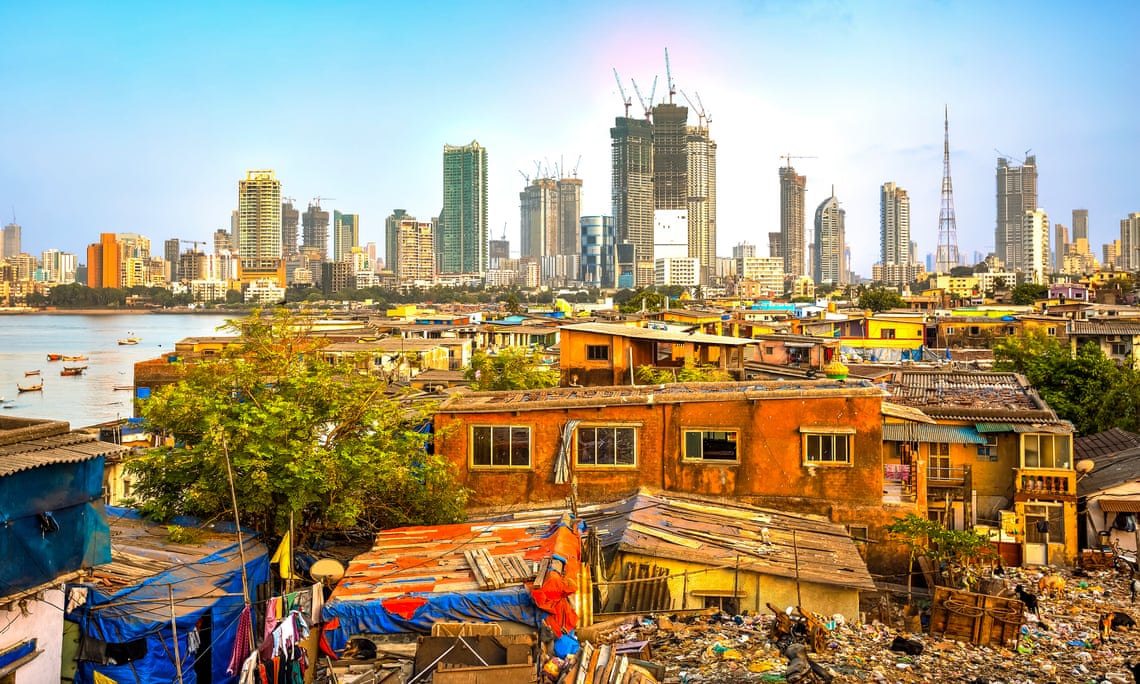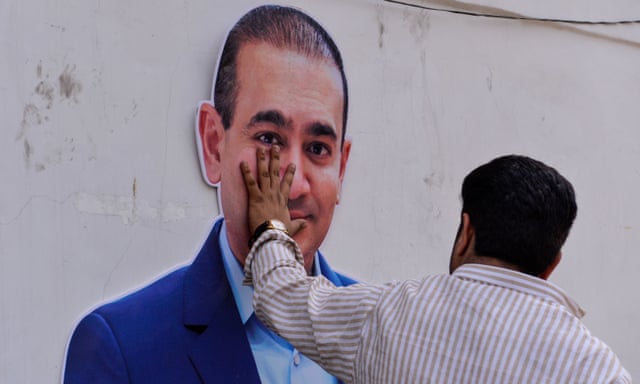- UID
- 20
- Online time
- Hours
- Posts
- Reg time
- 24-8-2017
- Last login
- 1-1-1970
|

India’s new billionaires have accumulated more money, more quickly, than plutocrats in almost any country in history.
▼ On 3 May, at around 4.45pm, a short, trim Indian man walked quickly down London’s Old Compton Street, his head bowed as if trying not to be seen. From his seat by the window of a nearby noodle bar, Anuvab Pal recognised him instantly. “He is tiny, and his face had been all over every newspaper in India,” Pal recalled. “I knew it was him.”
Few in Britain would have given the passing figure a second look. And that, in a way, was the point. The man pacing through Soho on that Wednesday night was Nirav Modi: Indian jeweller, billionaire and international fugitive.
In February, Modi had fled his home country after an alleged $1.8bn fraud casein which the tycoon was accused of abusing a system that allowed his business to obtain cash advances illegally from one of India’s largest banks. Since then, his whereabouts had been a mystery. Indian newspapers speculated that he might be holed up in Hong Kong or New York. Indian courts issued warrants for his arrest, and the police tried, ineffectually, to track him down.
It was only by chance that Pal spotted him. A standup comic normally based in Mumbai, he happened to be in London for a run of gigs. “My ritual was to go to the same noodle bar, have a meal, and then head to the theatre,” Pal said. “I always sat by the window. And then suddenly Modi walks past. He was unshaven, and had those Apple earphones, the wireless ones. He looked like he was in a hurry.”
It was another month before the press finally caught up with Modi, as reports of his whereabouts emerged in June, along with the suggestion that he was planning to claim political asylum in the UK. (Modi denies wrongdoing, and did not respond to requests for comment.) In the process, Modi also gained entry into one of London’s more notorious fraternities: the small club of Indian billionaires who seem to end up in the British capital following scandals back at home.
The most prominent among these émigré moguls is India’s “King of Good Times”, Vijay Mallya, the one-time aviation magnate and brewer, who transformed Kingfisher beer into a global brand. A few years ago, Mallya was one of India’s most celebrated industrialists, famous for his mullet haircut and flamboyant lifestyle. But in early 2016, Indian authorities filed charges relating to the collapse of his Kingfisher airline, which went bust in spectacular fashion in 2012, leaving behind mountainous debts and irate, unpaid staff. And so, facing allegations of financial irregularities and of refusing to repay outstanding loans, Mallya quietly boarded a plane for Britain, too.
Like Modi, Mallya denies wrongdoing. Last month he released a long statement accusing India’s government of conducting a witch-hunt against him. And to the extent that this claim has some merit, it is because Indian prime minister Narendra Modi(no relation to Nirav Modi) has of late been under great pressure to bring supposedly errant tycoons such as Mallya to book.
Men like Mallya and Modi were members of India’s expanding billionaire class, of whom there are now 119 members, according toForbes magazine.Last year their collective worth amounted to $440bn – more than in any other country, bar the US and China. By contrast, the average person in India earns barely $1,700 a year. Given its early stage of economic development, India’s new hyper-wealthy elite have accumulated more money, more quickly, than their plutocratic peers in almost any country in history.

A cardboard cut-out of billionaire jeweller Nirav Modi at a protest against him in New Delhi in February. Photograph: Chandan Khanna/AFP/Getty Images
Narendra Modi won an overwhelming election victory in 2014, having promised to put a stop to the spate of corruption scandals that had dogged India for much of the previous decade. Many involved prominent industrialists – some directly accused of corruption, while others had simply mismanaged their finances and miraculously managed to escape the consequences. Voters turned to Narendra Modi, the self-described son of a poor tea-seller, hoping he would deliver a new era of clean governance and rapid growth, ridding India of a growing reputation for crony capitalism.
Narendra Modi pledged to end a situation in which the country’s ultra-wealthy – sometimes called “Bollygarchs” – appeared to live by one set of rules, while India’s 1.3 billion people operated by another. Yet as they continue to hide out in cities like London, men like Mallya and Nirav Modi have come to be seen as representing the failure of that pledge; the Indian authorities “have a long road ahead”, as one headline put it in the Hindustan Times last year, referring to a “long and arduous” future extradition process in Mallya’s case.
And as Narendra Modi gears up for a tough re-election battle next year, he is fighting the perception that India is unable to bring such men to heel, and that it has been powerless to respond to the rise of this new moneyed elite and the scandals that have come with them. “This ongoing battle to get India’s big tycoons to play by the rules is one of the biggest challenges we face,” says Reuben Abraham, chief executive of the IDFC Institute, a Mumbai-based thinktank. “Getting it right is central to India’s economic and political future.”
India has long been a stratified society, marked by divisions of caste, race and religion. Prior to the country winning independence in 1947, its people were subjugated by imperial British administrators and myriad maharajas, and the feudal regional monarchies over which they presided. Even afterwards, India remained a grimly poor country, as its socialist leadership fashioned a notably inefficient state-planned economic model, closed off almost entirely from global trade. Over time, India grew more equal, if only in the limited sense that its elite remained poor by the standards of the industrialised west.
But no longer: the last three decades have seen an extraordinary explosion of wealth at the top of Indian society. In the mid-1990s, just two Indians featured in the annual Forbes billionaire list, racking up around $3bn between them. But against a backdrop of the gradual economic re-opening that began in 1991, this has quickly changed. By 2016, India had 84 entries on the Forbes billionaire list. Its economy was then worth around $2.3tn, according to the World Bank. China reached that level of GDP in 2006,but with just 10 billionaires to show for it. At the same stage of development, India had created eight times as many.
In part, this wealth is to be welcomed. This year India will be the world’s fastest-growing major economy. During the last two decades, it has grown more quickly than at any point its history, a record of economic expansion that helped to lift hundreds of millions out of poverty.
Nonetheless, India remains a poor country: in 2016, to be counted among its richest 1% required assets of just $32,892, according to research from Credit Suisse. Meanwhile, the top 10% of earners now take around 55% of all national income – the highest rate for any large country in the world.
Put another way, India has created a model of development in which the proceeds of growth flow unusually quickly to the very top. Yet perhaps because Indian society has long been deeply stratified, this dramatic increase in inequality has not received as much global attention as it deserves. For nearly a century prior to independence, India was governed by the British Raj – a term taken from the Sanskritrājya, meaning “rule”. For half a century after 1947, a system dominated by pernickety industrial rules emerged, often known as the Licence-Permit-Quota Raj, or Licence Raj for short. Now a system has grown in their place once again: the billionaire Raj.
The rise of India’s super-rich – the first and most obvious manifestation of the billionaire Raj – was propelled by domestic economic reforms. Starting slowly in the 1980s, and then more dramatically against the backdrop of a wrenching financial crisis in 1991, India dismantled the dusty stockade of rules and tariffs that made up the Licence Raj. Companies that had been cosseted under the old regime were cleared out via a mix of deregulation, foreign investment and heightened competition. In sector after sector, from airlines and banks to steel and telecoms, the ranks of India’s tycoons began to swell.
Nothing symbolises the power of this billionaire class more starkly than Antilia, the residential skyscraper built in Mumbai by Mukesh Ambani, India’s richest man. Rising 173 metres above India’s financial capital, the steel-and-glass tower is rumoured to have cost more than $1bn to build, looming over a city in which half the population still live in slums. (▪ ▪ ▪)
► Please, read the full note here: Source |
|